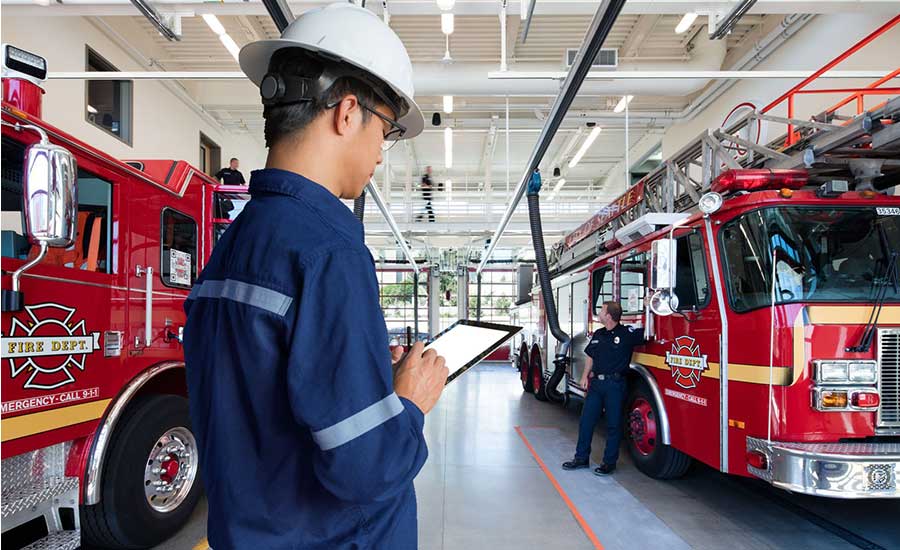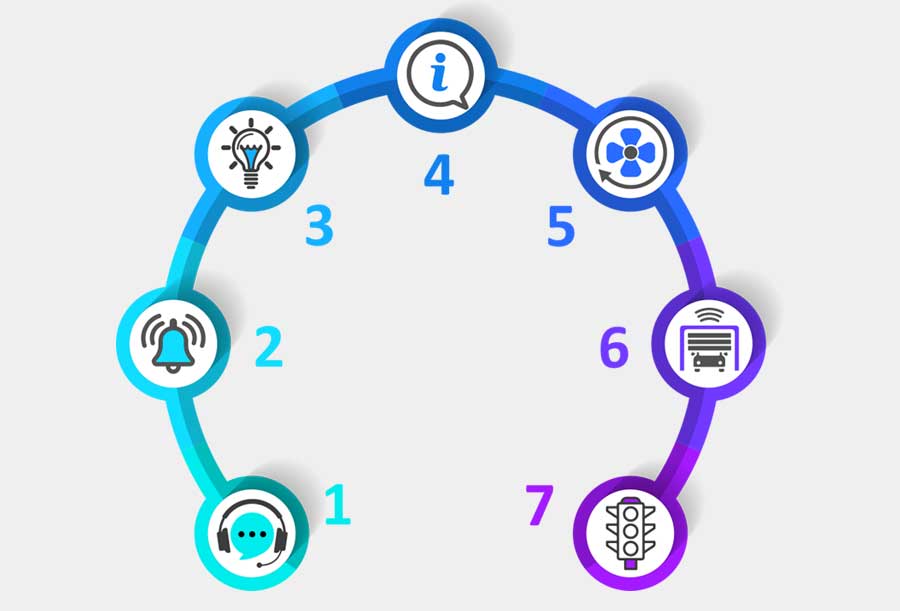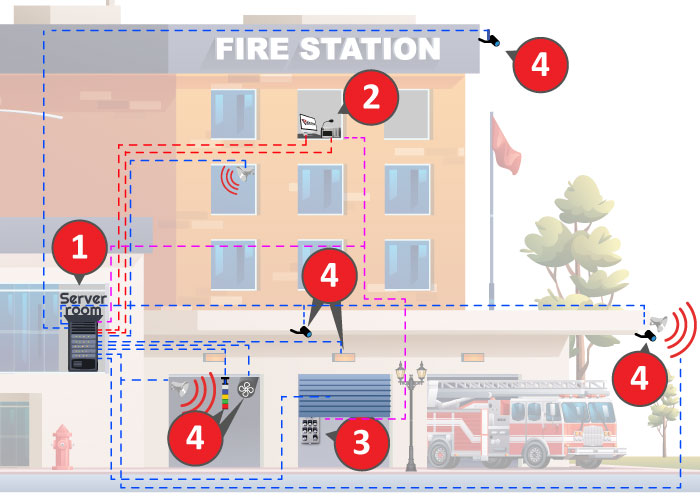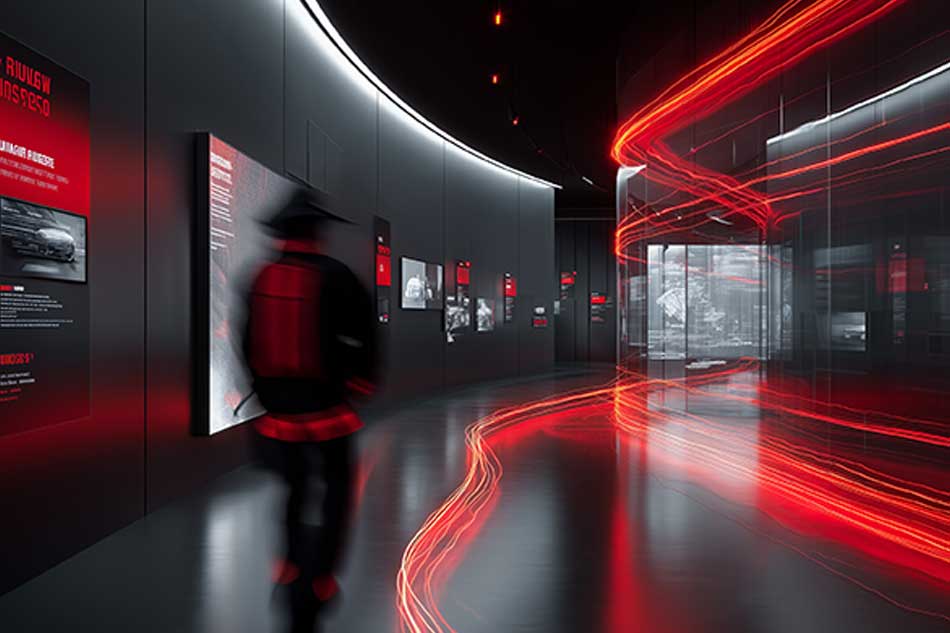Modern fire and rescue stations face increasing demands for response speed, reliability, and efficiency. In critical moments, every second counts—any delay can threaten lives and property. Automation enables faster, safer, and more efficient deployment by intelligently controlling all technologies—from opening garage doors to activating lighting and ventilation—without operator intervention. Shortening response time eliminates manual errors and relieves firefighters of routine tasks so they can focus fully on the emergency itself.
Automation of Fire
and Rescue Stations
Automation of Fire
and Rescue Stations

Why Automate Fire Stations
When the emergency call comes in, the fire station comes to life — alarm, lights, ventilation, deployment.
Automated Process After Receiving an Emergency Call
- Reception and redirection of the emergency call to the internal PA system of the station
- Activation of pre-alarm/alarm
- Activation of emergency lighting
- Broadcasting of additional information to the fire unit
- Activation or deactivation of the exhaust ventilation system
- Control of garage doors
- Activation or deactivation of light signals in front of the fire station

Comprehensive Automation Solution for Fire and Rescue Stations
Telegrafia’s fire station automation solution is designed as a modular, scalable, and fully integrative system that connects the station’s critical infrastructure into a single managed platform. It enables automated control and monitoring of all essential station technologies. The system includes digital process control from the moment an emergency call is received through to the actual dispatch. The system architecture focuses on reducing response time, minimizing manual actions, enabling remote control and monitoring, and allowing centralized management.

SCADA System
Manages and continuously monitors station technology. It allows direct control of lighting, garage doors, ventilation, HVAC, traffic signaling, and ramps—enhancing safety, reliability, and operational efficiency. It can also be integrated with higher-level control systems.
PA System
ables both automated and manual announcements and alerts for interior and exterior station areas. It includes high-powered amplifiers dimensioned for building size and acoustics and a 100V speaker network for reliable indoor and outdoor coverage.
Video Server
A key element of the camera surveillance system. It powers IP cameras, captures footage, and stores recordings for security and incident documentation. PoE (Power over Ethernet) simplifies installation by powering cameras via network cable. The system supports local and remote access to live feeds and archives.
Backup Power Supply (UPS)
Ensures uninterrupted power to the station’s technology during outages by automatically switching to backup sources. The central system supports remote diagnostics and battery monitoring to reduce failure risk during critical events.
OCP16 Operator‘s control panel
A modern device for managing the fire station. It enables fast control of all station technologies (except the camera system) via touchscreen or additional quick-select buttons. It supports the activation of predefined scenarios tailored to specific intervention types, accelerating system deployment.
Computer with Vektra® SCADA
Serves as the dispatcher workstation for controlling and monitoring all station technologies through centralized software. It supports communication with intercoms and peripheral systems, public address messaging, control of all technologies (except the camera system), and triggering of predefined dispatch or test scenarios. It can also connect to higher-level centers (municipal or regional dispatch).
Intercom (PA Console)
Enables two-way voice communication and allows control over selected systems in the station. Depending on the model, it also supports launching predefined scenarios via buttons, RFID, or keyboard.
Benefits of Fire Station Automation
Implementing a comprehensive fire and rescue station automation system significantly enhances operational efficiency, safety, and reliability. Modern technologies shorten response times, eliminate human errors, and centralize control of all key station systems.
- Reduced Response Time – Alarms, lighting, ventilation, and garage doors are automatically activated upon receiving an emergency call—no manual input required.
- More Efficient Deployment – Faster, safer, and more efficient response thanks to intelligent sequencing of all critical systems.
- Minimized Human Error – Automatic execution of critical tasks reduces the risk of mistakes or delays.
- Centralized Technology Management – One dispatcher center monitors and controls all station systems.
- Smart Scenarios for Rapid Response – One-button activation of predefined multi-step scenarios.
- Secured and Continuous Operation – Thanks to backup power supplies (UPS) and redundant software control, the station remains operational even during power outages.
- Remote Operation – Centralized dispatch centers can remotely manage and supervise station operations, increasing flexibility and effectiveness.
- Full Integration with SCADA and Other Systems – Seamless connection to existing technologies for monitoring, control, and automation.
- Option to Extend to Digital Station Management – Using Vektra® Management, features like electronic event logs, resource management, finance, inventory, and equipment tracking can be added.
- Support for Modernization and Future Growth – The solution is open to new technology integration (e.g., IoT devices, advanced data analytics, predictive management).




